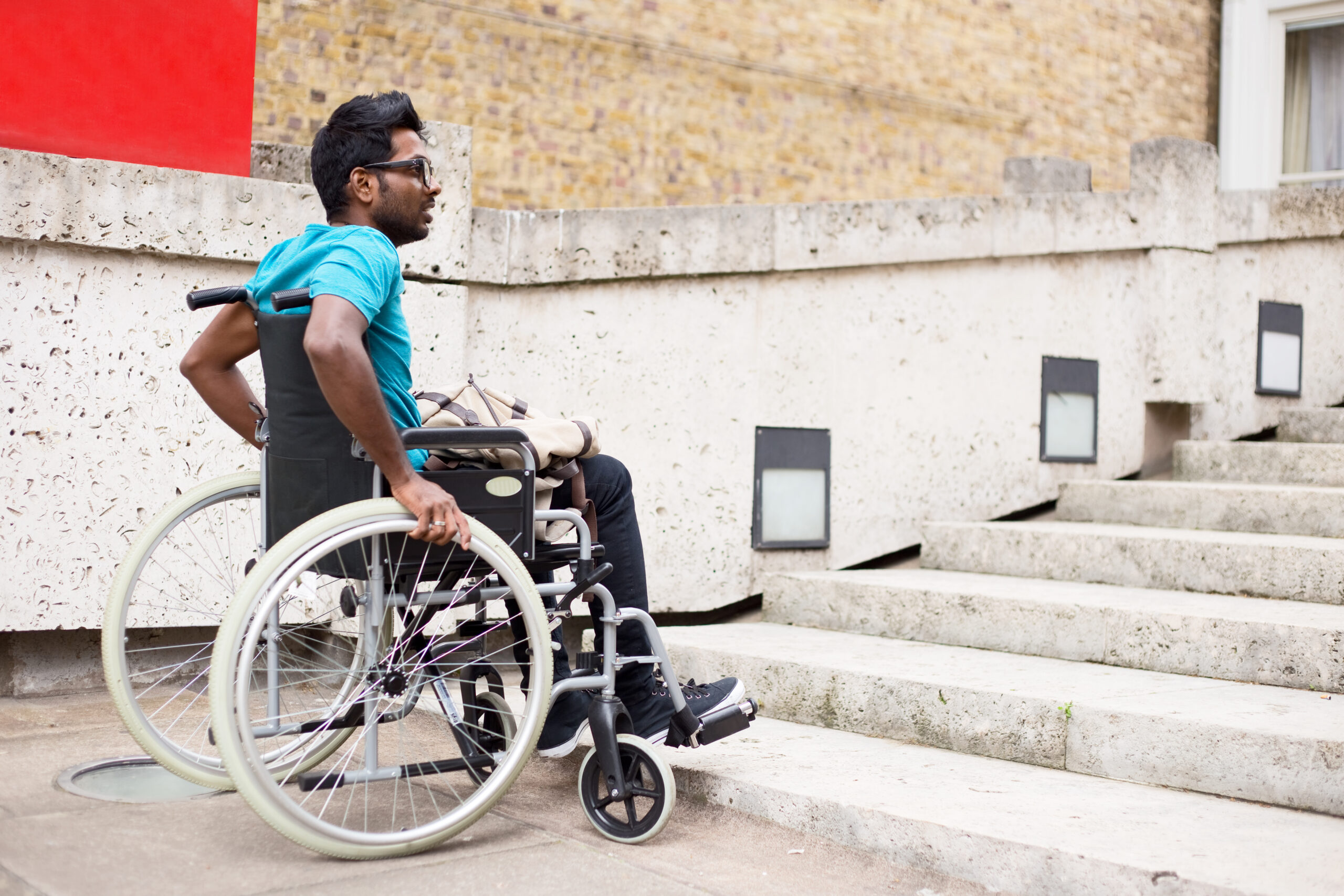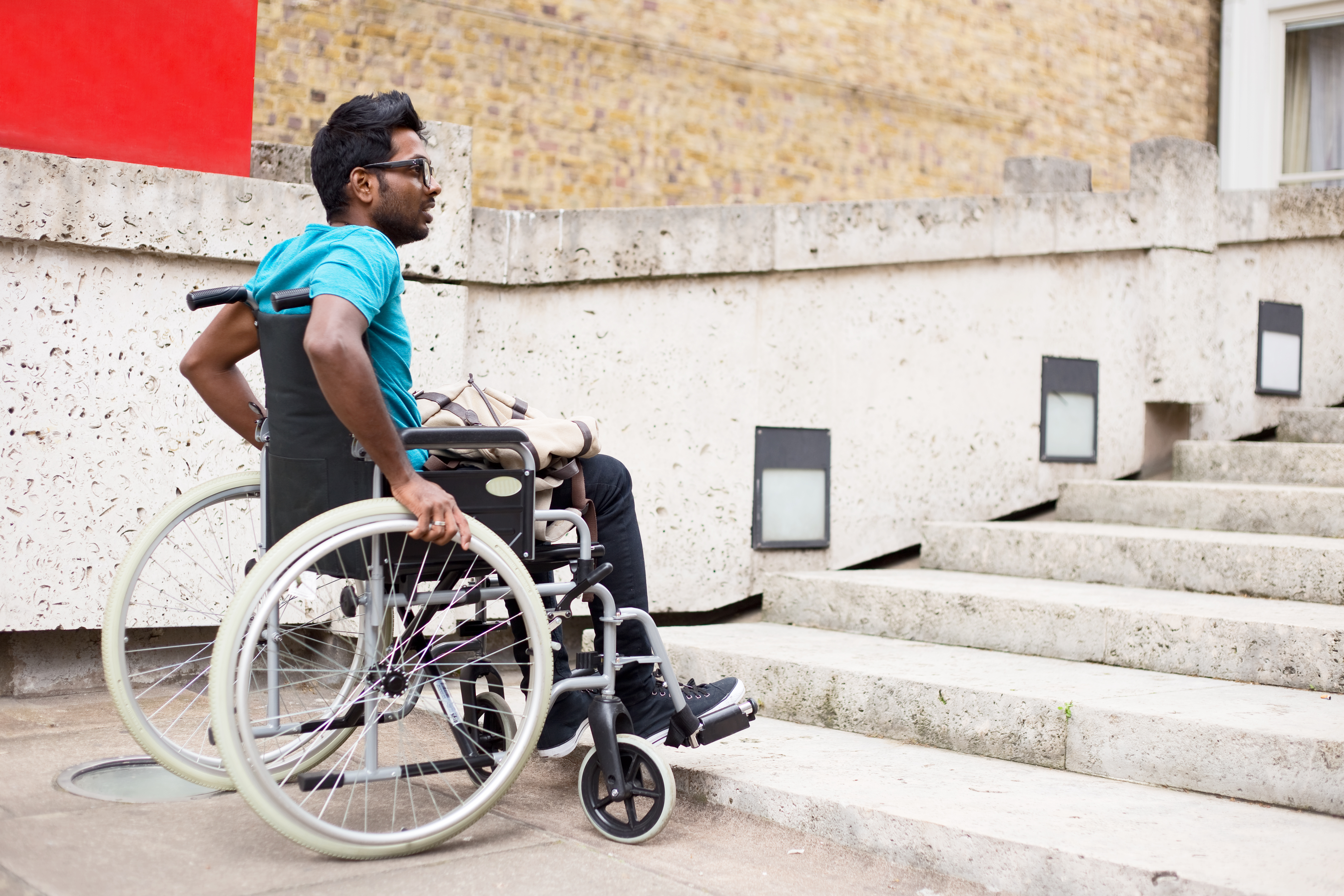Exploring the vibrant and culturally rich country of Japan is a dream come true for many. However, traveling to Japan with a disability comes with its own set of unique challenges and incredible rewards. In this blog post, we will delve into every aspect of Japan disabled travel, from planning your accessible trip to navigating airports and public transportation with ease. Discover the must-see accessible attractions in Japan, find the best accessible accommodation, and uncover culinary delights at restaurants that cater to everyone. Moreover, we will share invaluable Japan travel tips for disabled travelers to make your journey safe and enjoyable. Through personal stories and experiences from fellow disabled travelers, you will gain insight into the realities and joys of Accessible Travel japan. Come along as we explore the many facets of disability-friendly tours in Japan and prepare you for an unforgettable adventure tailored to your needs.
Win a Free Trip to Japan!
Experience cherry blossoms and ancient temples
Planning Your Accessible Trip to Japan
Planning for an accessible travel japan adventure begins long before you board the plane. The key to ensuring a smooth experience involves thoughtful preparation, gathering insights, and utilizing the right resources. Here are some vital steps to make your journey seamless and enjoyable.
Research and Documentation
Consult Online Resources: Utilize travel blogs, forums, and websites dedicated to disability travel Japan. These platforms often feature firsthand accounts and expert advice for traveling to Japan with a disability.
Obtain the Right Documentation: Ensure you have all necessary medical documents and accessibility aids. A formal letter from your healthcare provider can be useful if you need to carry specific equipment or medication.
Transportation and Mobility
Booking Flights: Always inform the airline of your accessibility needs well in advance. This includes requesting wheelchair assistance or special seating arrangements.
Accessible Public Transportation: Japan offers a range of accessible public transportation options, including:
- Trains: Most major stations are equipped with elevators and ramps.
- Buses: Look for buses marked with wheelchair symbols.
- Taxis: Some cities offer wheelchair-accessible taxis.
Essential Planning Tools
To make the planning process easier, here’s a quick reference table of useful tools and contacts:
| Tool/Contact | Function | How to Access |
|---|---|---|
| Japan Accessible Travel Center | Information hub for accessible travel | Website/E-mail |
| HyperDia App | Public transportation route planning | Mobile App |
| Accessible Japan Website | Comprehensive guide and tips | Website |
Itinerary Considerations
When creating your itinerary, consider:
- Accessible Attractions: Research and include Japan disability-friendly tours in your plans. Places like Tokyo Disneyland and Ueno Zoo are known for their accessibility.
- Accommodations: Ensure all your stays are booked at hotels or Airbnb listings labeled as accessible.
In Conclusion
Being well-prepared amplifies the pleasure of accessible travel in Japan. Leveraging these resources and tips ensures a seamless and memorable experience for you. Incorporating these Japan travel tips for disabled travelers is essential for a safe and enjoyable trip.
In the next sections, we’ll delve into how to navigate Japanese airports and public transportation effortlessly, and explore must-see accessible attractions. Stay tuned!
Navigating Japanese Airports and Public Transportation with Ease
When traveling to Japan with a disability, understanding the accessible travel in Japan is crucial for a smooth journey. Navigating Japanese airports and public transportation can be straightforward and hassle-free if you are well-prepared.
Airports
Japanese airports are known for their excellent facilities catering to travelers with disabilities. Here’s what you can expect:
- Wheelchair Assistance: Available at all major airports.
- Accessible Restrooms: Found throughout terminals, clearly marked.
- Priority Check-ins: Special counters available.
- Guidance Services: Airport staff ready to assist with navigation and connections.
Public Transportation
Accessible Travel Japan extends seamlessly into its public transportation system. Here’s a quick breakdown:
| Transport Mode | Accessibility Features |
|---|---|
| Shinkansen Trains | Ramps, accessible toilets, priority seating. |
| Subway Systems | Elevators, tactile paving for the visually impaired. |
| Buses | Low-floor buses, dedicated wheelchair spaces. |
| Taxis | Wheelchair accessible taxis available upon request. |
Helpful Tips
- Purchase a Japan Rail Pass: Ensures unlimited rides on the Shinkansen and JR trains which are known for being highly accessible.
- Pre-book Assistance Services: Most transportation companies offer pre-booked assistance. Ensure to arrange this in advance.
- Accessible Apps: Use apps like “JapnLive” and “Navitime” for real-time information on accessible routes and facilities.
By following these Japan travel tips for disabled travelers, navigating your way through Japanese airports and public transportation can become a hassle-free experience. This ensures that your trip can be more enjoyable and less stressful, providing you ample opportunity to enjoy what Japan has to offer.
Must-See Accessible Attractions in Japan
Travelers with disabilities will find a variety of must-see accessible attractions in Japan that offer both cultural richness and ease of access. From historic sites to modern marvels, Japan ensures that all travelers can enjoy its beauty.
Historical Sites and Landmarks
Several historical landmarks are adapted for accessible travel in Japan:
- Tokyo Imperial Palace: With ramp access and well-maintained paths, the Palace is accessible to everyone.
- Osaka Castle: This iconic landmark offers elevators and smooth pathways for wheelchairs.
- Kyoto’s Kinkaku-ji Temple: Also known as the Golden Pavilion, this site provides accessible routes and facilities.
Modern Marvels
For those looking to explore contemporary Japan:
- Tokyo Tower: Elevators make it easier for travelers to reach observation decks.
- Odaiba: This high-tech island features wide streets and accessible venues like the teamLab Borderless museum.
“In my experience, traveling to Japan with a disability was remarkably smooth, especially with the assistance available at major attractions. It’s comforting knowing that so many popular spots are disability-friendly.”
Natural Wonders and Parks
Japan’s natural attractions also cater to visitors with disabilities:
- Hakone National Park: Accessible ropeways make this park ideal for viewing Mount Fuji.
- Shinjuku Gyoen National Garden: Offers wheelchair-accessible pathways and beautiful seasonal displays.
- Arashiyama Bamboo Grove: Located in Kyoto, the grove has paths suitable for wheelchairs, making it a serene escape.
Accessible Beaches
If you’re looking for a seaside retreat, accessible travel Japan has got you covered:
- Zushi Beach: Ramps and accessible showers make this beach a go-to spot.
- Okinawa Beaches: Many resorts provide beach wheelchairs and accessible boardwalks.
Comparison Table: Key Accessible Attractions
| Attraction | Accessibility Features |
|---|---|
| Tokyo Imperial Palace | Ramps, Accessible Paths |
| Osaka Castle | Elevators, Smooth Pathways |
| Tokyo Tower | Elevators to Observation Decks |
| Hakone National Park | Accessible Ropeways |
| Shinjuku Gyoen National Garden | Wheelchair-Accessible Paths |
| Zushi Beach | Ramps, Accessible Showers |
By integrating these accessible attractions into your itinerary, you ensure a memorable and enjoyable adventure. For Japan disability-friendly tours, consider consulting local travel agencies that specialize in accessible travel for personalized experiences.
Finding Accessible Accommodation in Japan
When planning a trip to Japan, ensuring that your lodging can meet your accessibility needs is crucial. Fortunately, the rise of Accessible Travel Japan has made it much easier to find suitable accommodations for those traveling with disabilities. Here are some key tips for finding accessible accommodation in Japan:
Identify Accessible Features: Understanding the specific features you require is essential. Look for hotels that offer:
- Wheelchair-accessible rooms
- Roll-in showers
- Grab bars in bathrooms
- Elevator access
- Wide doorways and hallways
Online Resources and Reviews: Utilize online platforms that specialize in disability Travel Japan. Websites such as Accessible Japan and Japan Accessible Tourism Center offer detailed reviews and listings of accessible accommodations. Also, check traveler websites like TripAdvisor to read first-hand experiences from other disabled travelers.
Direct Communication: Directly contacting hotels can clarify whether their facilities meet your needs. Here’s a sample table that highlights potential questions to ask:
| Aspect | Questions to Ask |
|---|---|
| Room Accessibility | Are there any wheelchair-accessible rooms? |
| Bathroom Facilities | Is there a roll-in shower and grab bars? |
| Common Areas | Are common areas like the lobby and dining room accessible? |
| Transportation | Does the hotel offer accessible transportation services? |
Japan Disability-Friendly Tours: Many travel agencies in Japan specialize in creating itineraries tailored for disabled travelers. These agencies often have partnerships with hotels that provide accessible features, making the booking process smoother.
Location Consideration: Consider staying at accommodations close to accessible attractions and public transport options. Major cities like Tokyo, Kyoto, and Osaka are better equipped with accessible facilities compared to rural areas.
Example Hotels:
- Keio Plaza Hotel in Tokyo
- Hotel Granvia in Kyoto
- Universal Studios Japan Hotel in Osaka
By following these tips and utilizing available resources, you can ensure a comfortable and accessible stay during your traveling to Japan with a disability. Remember, thorough planning and research can make your journey not only feasible but also enjoyable and enriching.
Dining Out: Accessible Restaurants and Culinary Experiences
Exploring the culinary delights of Japan is an exciting adventure, especially for those interested in Accessible Travel Japan. Fortunately, many Japanese restaurants are becoming more inclusive, catering to the needs of all travelers. Here are some essential Japan travel tips for disabled travelers to ensure an enjoyable dining experience.
Accessibility Features in Restaurants:
To enhance readability, the table below outlines common accessibility features found in Japanese restaurants:
| Accessibility Feature | Description |
|---|---|
| Entrances | Ramps and wide doors make it easy for wheelchairs. |
| Seating Options | Accessible seating and spacious arrangements. |
| Restrooms | Barrier-free toilets specifically designed for accessibility. |
| Staff Assistance | Trained staff to support guests with disabilities. |
| Menus | Braille menus or digital menus with voice options. |
Popular Accessible Restaurants:
Here are a few must-visit dining spots known for their accessibility:
- Ginza Kyubey: Located in Tokyo, offering sushi with barrier-free entrances and accessible restrooms.
- Ukaitei: A high-end teppanyaki restaurant with convenient access and adapted facilities in multiple locations.
- Kani Doraku: Osaka’s famous crab restaurant, equipped with ramps and spacious dining areas.
Culinary Experiences:
Japan’s culinary landscape is vast and intriguing. Consider the following Japan disability-friendly tours that focus on food:
- Street Food Tours: Explore Yokohama’s vibrant street food scene, where market stalls are often accessible.
- Cooking Classes: Join accessible cooking classes in Kyoto, allowing you to prepare and enjoy traditional dishes.
Helpful Tips:
- Advance Reservation: Book in advance and inform the restaurant about specific accessibility requirements.
- Online Reviews: Check websites like WheelchairTravel.org for reviews on accessible dining spots.
- Local Guides: Engage local guides who specialize in disability travel Japan to get personalized recommendations.
Dining is a fundamental part of experiencing Japanese culture. Embrace the diversity and make the most of the accessible culinary experiences that Japan has to offer!
Tips for an Enjoyable and Safe Journey
Planning your adventure to Japan with a disability can be an enriching experience. Below are some key tips to make your journey enjoyable and safe:
Prepare Ahead
- Research: Look up Japan travel tips for disabled travelers and gather as much information as possible about accessible travel Japan. Resources like blogs, travel forums, and government websites can be valuable.
- Plan your route: Pre-plan routes that are known for their good accessibility, such as major tourist spots and efficient public transportation systems.
- Book accommodations early: Ensure you book hotels that cater to accessibility needs. Websites like Booking.com and Agoda offer filters for disability-friendly accommodation.
Utilize Public Transportation
Navigating public transport in Japan can be easy with a bit of preparation. Most trains and buses are equipped for disability travel Japan:
- JR Pass: Consider buying a JR Pass, making travel on Japan Railways convenient and cost-effective.
- Accessibility maps: Use accessibility maps provided at major stations.
- Verify elevator access: Check stations in advance for elevator availability, as not all might have one.
Pack Smart
Bring items that will ensure a comfortable trip:
- Medication and essentials: Pack enough medication for your stay, including any assistive devices.
- Documentation: Have all necessary documents, such as disability IDs, medication prescriptions, and insurance details.
- Translation tools: Apps like Google Translate can be life-savers in assisting you with language barriers.
Tips from Fellow Travelers
“Traveling to Japan with a disability was made comfortable thanks to the Japanese culture of respect and assistance,” shares Maria, a frequent traveler. “Make sure to reach out for help when in need, as locals are generally eager to assist.”
Stay Connected
- Local SIM card: Purchase a local SIM card for reliable internet and easy navigation.
- Emergency contacts: Keep a list of local emergency contacts and the nearest embassy or consulate.
- Travel insurance: Don’t skimp on travel insurance; ensure it covers medical emergencies specific to your needs.
By following these tips, your journey for an accessible travel in Japan can be smooth and highly enjoyable. With a bit of planning, you can make the most out of Japan’s cultural richness and hospitality.
Personal Stories and Experiences from Disabled Travelers in Japan
Traveling to Japan with a disability, while challenging, can be an incredibly rewarding experience. Many travelers who have undertaken accessible travel in Japan have shared inspiring stories that highlight the country’s efforts to be inclusive. Here are a few personal anecdotes and insights that can guide your journey:
Overcoming Public Transportation Woes
Sarah, a wheelchair user from the UK, found navigating Japanese public transport surprisingly smooth. Despite initial apprehensions, she was pleased to see that most train stations had elevators and dedicated seating areas for disabled passengers. “The station staff were incredibly helpful; they even arranged for someone to meet me at my destination to assist with getting off the train.”
Accessible Accommodations: A Pleasant Surprise
John, who has limited mobility, was worried about hotel accommodations. However, he was pleasantly surprised to find that many hotels in Japan are equipped with accessible rooms featuring wider doorways, roll-in showers, and grab rails.
| Hotel Features | Comments from Travelers |
|---|---|
| Wide Doorways | “Made maneuvering my wheelchair effortless.” |
| Roll-In Showers | “A true lifesaver after a long day out.” |
| Grab Rails | “Provided the stability I needed.” |
Dining Out: An Inclusive Culinary Experience
Samantha, a visually impaired traveler, shared her excitement about dining out in Japan. “Restaurants were more accessible than I expected, with braille menus and staff willing to explain dishes to me. I enjoyed a wide variety of Japanese dishes without feeling left out.”
Must-See Accessible Attractions
Many travelers, such as Tom, emphasize the importance of including Japan disability-friendly tours in your itinerary. These tours often cover popular spots with good accessibility such as temples with ramps, museums with elevators, and parks with smooth pathways.
Final Thoughts
Hearing personal stories from those who have experienced accessible travel Japan first-hand can be both encouraging and informative. These experiences serve as a reminder that, with a bit of planning and the right Japan travel tips for disabled travelers, you can enjoy a fulfilling travel experience.
Frequently Asked Questions
1. How accessible is public transportation in Japan for disabled travelers?
Public transportation in Japan is generally quite accessible for disabled travelers, especially in major cities like Tokyo, Osaka, and Kyoto. Many train stations are equipped with elevators, escalators, and accessible restrooms. Additionally, buses often have wheelchair ramps and designated seating areas. However, some older or rural train stations may lack these facilities, so it is advisable to plan your journey in advance and check accessibility options.
2. Are there any specific services for disabled travelers in Japan?
Yes, Japan offers various services for disabled travelers to ensure convenience and comfort. For instance, the JR (Japan Railways) provides assistance services at major train stations, where staff can help you navigate the station and board trains. Taxis equipped with wheelchair lifts are also available in many cities. Moreover, some travel agencies specialize in accessible travel and can help you arrange customized itineraries that cater to your specific needs.
3. What kind of accommodations can disabled travelers find in Japan?
Disabled travelers can find a range of accommodations in Japan, from budget hostels to luxury hotels, that provide accessible rooms and facilities. Many hotels are equipped with features such as wheelchair ramps, wide doorways, roll-in showers, and grab bars in bathrooms. When making a reservation, it’s crucial to specify your needs to ensure the hotel can accommodate you properly. Websites like Booking.com and Agoda offer filters to help find accessible accommodations.
4. Are Japan’s tourist attractions accessible for travelers with disabilities?
Many of Japan’s top tourist attractions are increasingly becoming accessible to travelers with disabilities. For example, famous sites like Tokyo Disneyland, Osaka Castle, and the historic temples of Kyoto have made significant efforts to improve accessibility. These sites often offer features such as smooth pathways, ramps, elevators, and accessible restrooms. However, some traditional or natural attractions may still pose challenges due to stairs or uneven terrain, so it’s important to inquire about accessibility options beforehand.


